Prior to having my kiddos, I was a massage therapist at a chiropractor’s office. I saw first-hand the many positive effects of massage therapy. Now, in the patient role, I can say that massage therapy has been useful for me in dealing with POTS and ME.
I struggle with my muscles feeling “gassed” like I have perpetually just gotten done sprinting a 400m. Booty lock for life. This exacerbates the fatigue. One of the most useful things for this has been massage therapy (the other helpful thing is Mestinon). I taught my husband how to do basic massage techniques, and he massages my legs every evening. What a guy, right? My legs immediately feel relief and it helps me be more primed to exercise and function the following day.
DISCLAIMER: Please consult your doctor prior to initiating massage therapy. There are many medical and medicinal contraindications as I will briefly discuss below.

How massage therapy is helpful for POTS and ME
Boosts parasympathetic function
Massage can be relaxing and this will encourage more parasympathetic nervous system function. As I have discussed several times before on this blog, the current understanding of the etiology of POTS and ME involve an excess of sympathetic nervous system activity. Our nervous system is either operating in the parasympathetic or the sympathetic at a given moment, so by encouraging parasympathetic nervous system activity, we are lowering the amount of sympathetic nervous system activity.

I feel like that was complicated. Let me try again. Massage relaxes you, which improves the balance of nervous system activity that contributes to POTS and ME.
Helps with “gassed” muscles
That “gassed” feeling is exactly what it sounds like- the muscles are either not getting enough oxygen or not utilizing it properly. Many researchers believe there is a component of diseases like ME, POTS, fibromyalgia, etc. in which the tissues are not receiving oxygen quickly or efficiently enough. The blood oxygen measure (think the pulse oximeter that doctors put on your finger) in the arteries will be normal, but the uptake in the tissues is not. Massage therapy increases circulation to the muscles. Increased circulation means more oxygen. Therefore, massage can temporarily improve the “gassed muscles” by promoting greater oxygen availability to the muscles.
Side note, that above link titled “uptake in the tissues is not” goes to an article on Cort Johnson’s site named Health Rising. I want to shout out his work. He does an amazing job of keeping the ME/CFS community “in the know” about the latest research and explaining the relevance of each study to the community.
Relieves pain
Many people with POTS and ME also have fibromyalgia or other sources of chronic pain. Massage therapy relaxes muscle tension which can relieve pain.
Assists with venous return
The motion of massage should always (or almost always) be moving towards the heart. This compressive upward motion assists the blood in moving back towards the heart. Some POTS patients experience blood pooling in their extremities and massage can be a useful way to temporarily relieve that symptom.
How to do it
If you can afford it, have the ability to drive, the energy, and the time- then by all means a professional massage therapist is the way to go. For many of us with chronic illness, one or more of those factors are an issue. So, I am going to teach you how to do this at home.
With the help of a friend or family member
This YouTube video demonstrates the basic Swedish strokes. There are many other videos on the internet that teach the basic strokes. You can have your person watch one and mimic it on you. The foundation is that you are pushing and gliding towards the heart. Have them start with a flat hand, that is the most basic stroke.
They can also use basic sports massage techniques. This is more along the lines of what my husband does to me. He does compression strokes moving towards the heart and then does this technique demonstrated between 9:20-9:40 on this YouTube video.
Massage stick
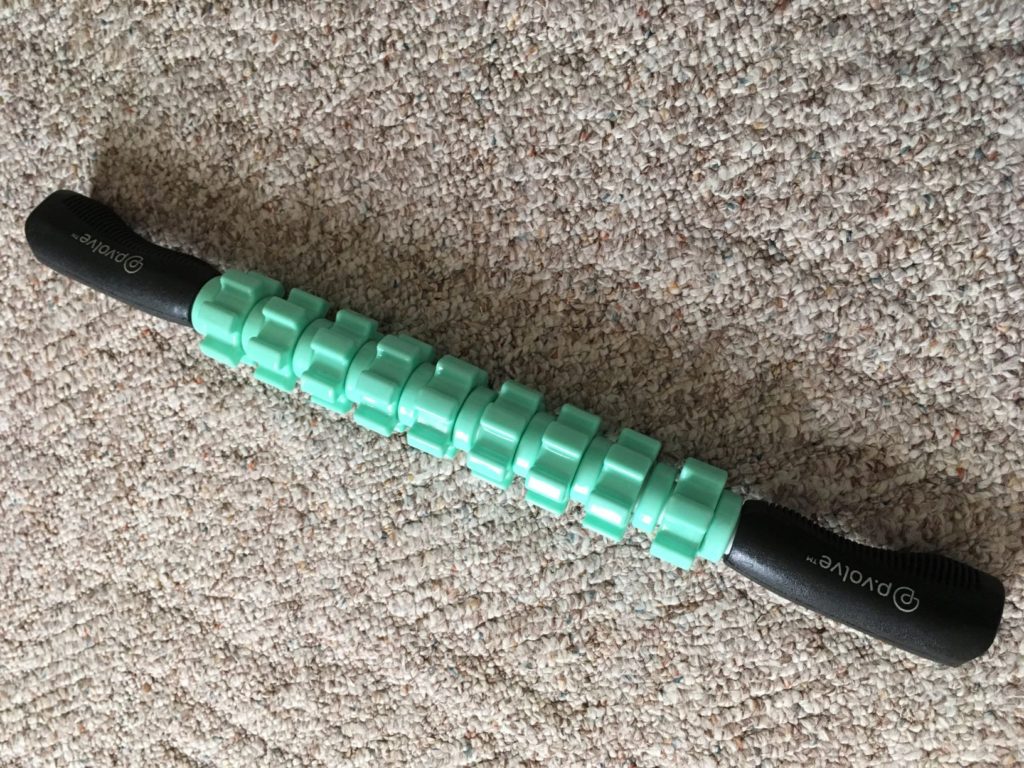
If your person feels inept at massage, get them a stick to use on you. It makes it piece of cake.
You can also use the stick yourself. Work with gravity to minimize your effort. For example, if you are massaging the quadriceps (front of the thighs), bend your knee and start the stick at knee level. Then slowly move the stick towards the direction of your hip (or the floor). My husband is demonstrating it in this picture. He could be a part-time model ;).
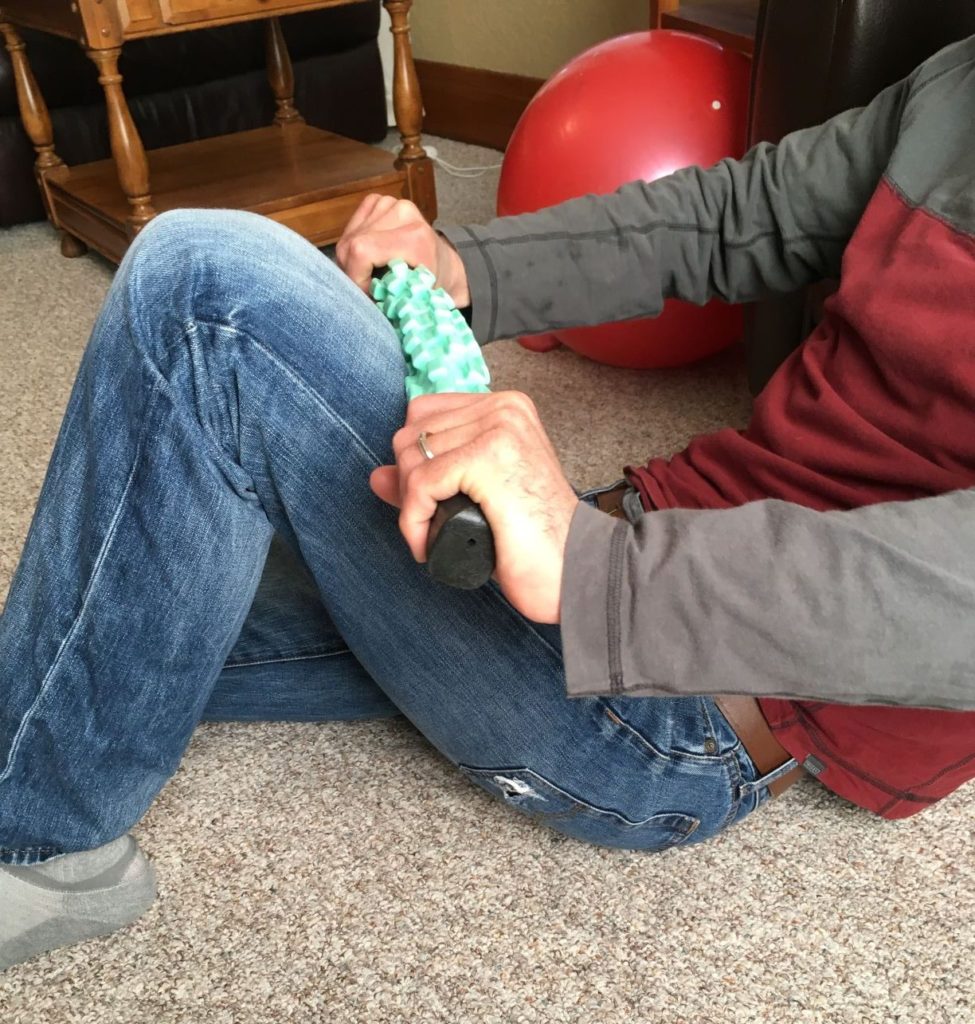
Using your knee to massage your calf
This is really easy. Bend one knee, then cross the other leg over it with bottom of your calf touching your opposite knee cap. Slowly straighten your top leg and as you do so your kneecap of the bottom leg massages your calf of the top leg. Voila!
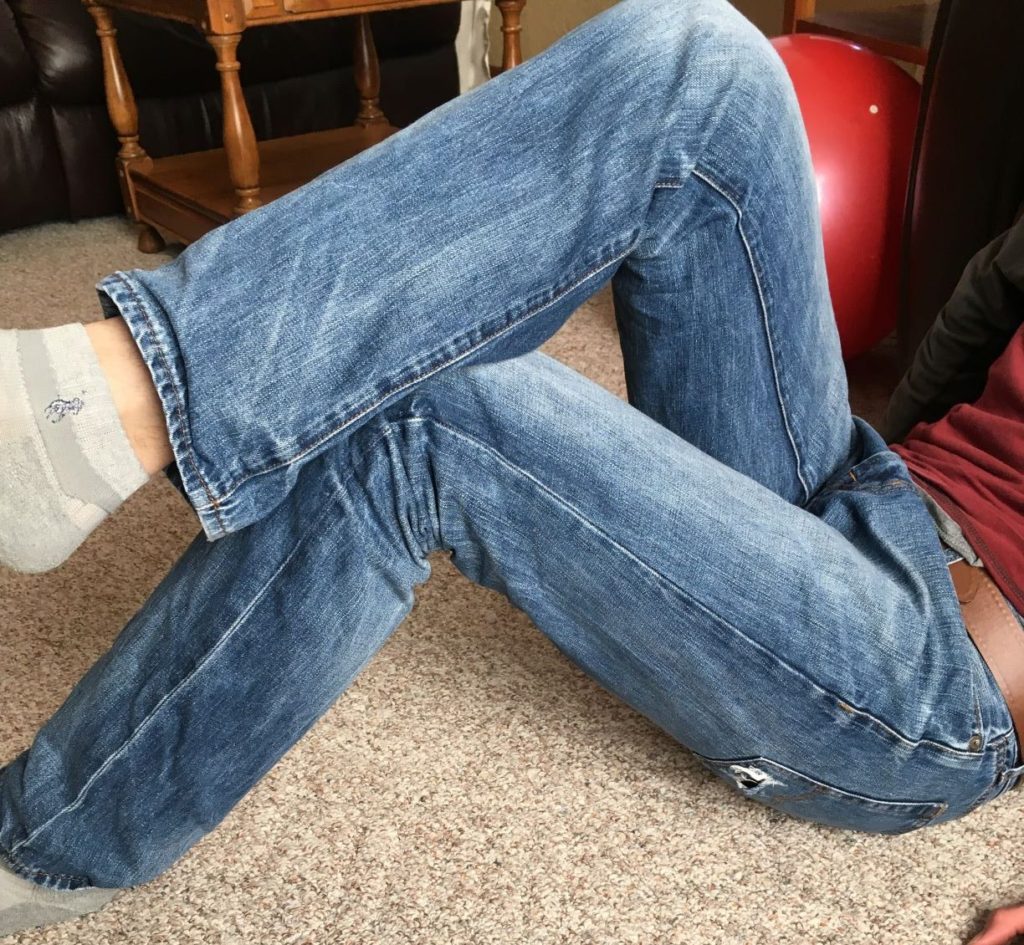
DIY
This is going to be hard for many people with POTS and ME because of the energy required. However, you can try to massage your own legs using your hands. The second half of this video does a good job of demonstrating self-massage techniques on the legs.
Foam roller or ball
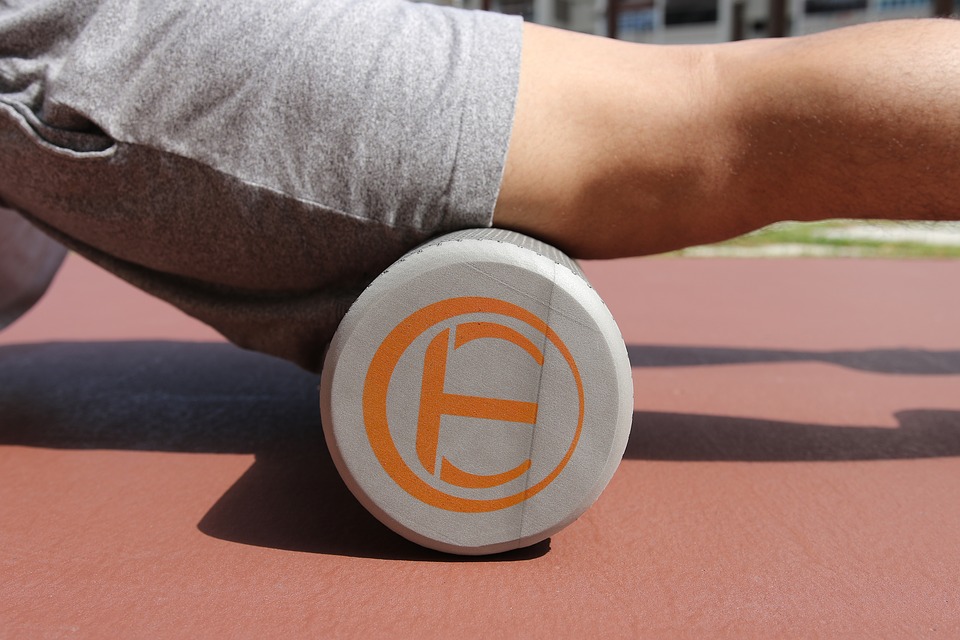
Foam rollers can be strenuous to use. However, if you are able, they are an excellent and affordable tool. Basically, you lay whatever body part you want to massage on it, and slowly roll back and forth working on a couple inches of space at a time. YouTube has a plethora of videos if you want to get into this but aren’t sure how to do it.
I also like using Yoga Tune Up balls. These can be used similar to a foam roller, but in certain areas a foam roller cannot. I really like using the a Yoga Tune-Up ball on the glutes, rhomboids, and neck/suboccipital muscles. I think the balls are also less difficult to use energy-wise because you don’t have to lift yourself off the ground as much to use it.
Massage Guns
It’s 2023 while I’m writing this addition, and massage guns are all over the place. I purchased this one by Lifepro and really like it. I got it on a major sale for around $75, so I would recommend keeping an eye out on prices as it seems like most massage guns go on sale from time to time. Massage guns are nice because you can apply good pressure and impact without a lot of effort. I wonder if they would be irritating to people with fibromyalgia, for example. Even the lowest setting of my massage gun is pretty strong. I have tried my mom’s massage gun, which was a random cheapy from Amazon. You can definitely tell the difference, the cheap one from Amazon is weaker. However, that may be more of your preference. So, my advice would be this- if you want a strong, deep massage, go for a higher quality one. If you are more sensitive or reactive but still want to try it, a cheaper or travel device may be more up your alley. I would also consult your doctor before you plan on using a massage gun in case it is contraindicated for you.
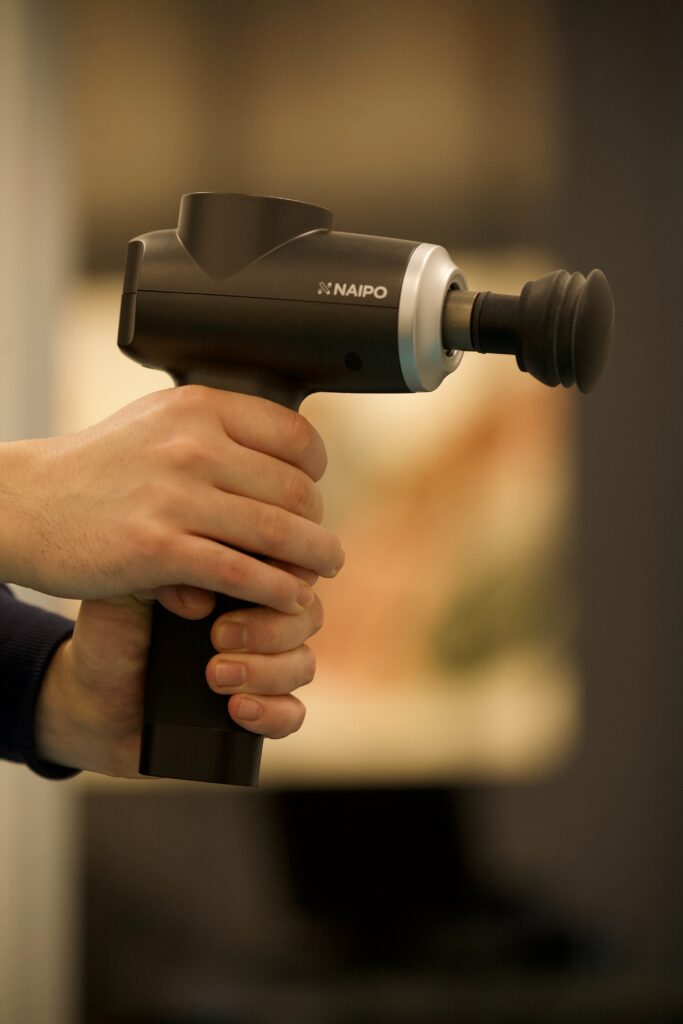
Contraindications
Massage therapy is not an inert practice, so it is important that you consult your doctor before pursuing it. Massage therapy is contraindicated for certain conditions such as: varicose veins, bruising, skin lesions, edema, some cardiovascular diseases, etc. I used to have a whole book full of contraindications, so I couldn’t begin to scratch the surface of it. I cannot stress enough to consult your doctor first.
Massage can also affect how certain medications work in your body. For example, a vigorous Swedish massage can interfere with how fast time-released medications disperse in your system. So, it is also important to discuss your medications with your doctor and ask if massage is safe with them. In addition to the giant book of contraindications, I had a ginormous book listing every medication imaginable and how to approach massage accordingly. Before I would massage a client, I would reference every medication they were taking. If you see a professional massage therapist, make sure you disclose all of your health issues and medications to them.
Have you used massage therapy as a treatment for POTS and ME? How has it worked for you?
Disclaimer: I am not a medical professional. Statements on this site are not meant to be taken as medical advice. These statements reflect my personal experiences having mild-ish post-viral POTS and ME. Due to the wide spectrum of these diseases, comorbidities, and everyone being different, your experiences may be very different than mine.
Note: If you post a comment, this site does NOT have a feature to notify you of responses to your comment. I have not found a good solution for that yet. However, I usually respond to every comment in a timely manner, so be sure to check back.
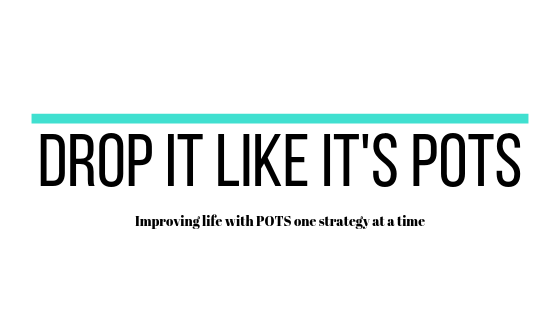
6 Comments
I am 55. Have been diagnosed with POTs/h-EDS since 40. Regularly get massaged (1/week – 1/month depending on time and needs of body). Recently tried a new massage therapist – hurt like hell! Lots of working along the spine and nerve pathways and mobilising tissue – which felt like tearing. But afterwards checked my standing pulse and it was 75! This effect last 48hrs. Tried a different massage therapist – no change in standing pulse. Went back to to the first guy – again standing pulse in the 70s. What the!? Has anybody heard of this. If I did it regularly would my POTs be fixed?
Wow, that’s interesting! I’m guessing it would not be curative since EDS (genetics) is probably your underlying factor, but maybe it can serve as a treatment? Do you feel better after these sessions? Thank you for sharing your experience.
Hi Sharon, if you read my reply hope you will respond. Just wonder how you get on with your PoTs now. Have you continued getting massages regularly still. My daughter diagnosed with pots before last Christmas after she was very weak for over a year.
I had no idea that certain medications can be released faster with certain massage techniques. But that makes sense once you explained it. I personally feel that insurance companies should recognize massage as a medicinal therapy and cover the cost. And if I ever win the lottery you can bet I’ll be getting daily in-home massages! 😁